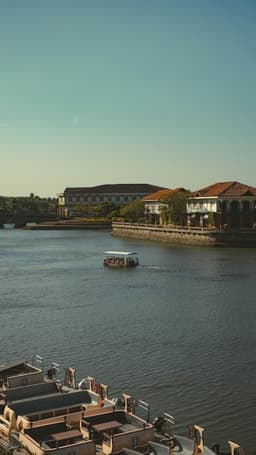Flowing through the heart of South America like a lifeline, the Amazon River stands as a testament to the raw power and staggering beauty of nature. As the largest river in the world by discharge volume and one of the longest, it weaves its way through dense rainforests, vast plains, and sprawling cities, shaping the landscape and sustaining an unparalleled diversity of life.
Origin and Course: The journey of the Amazon begins high in the Peruvian Andes, where glacial meltwaters and mountain streams converge to form its headwaters. From this humble beginning, it meanders eastward across the continent, gathering momentum and magnitude as it collects water from a network of tributaries that stretch across Brazil, Peru, Colombia, and several other countries.
Size and Scope: The sheer scale of the Amazon is staggering. At its widest point during the wet season, it can span over 11 kilometers (7 miles), resembling a vast inland sea rather than a mere river. Its total length, estimated at around 6,575 kilometers (4,086 miles), ranks it as the second-longest river in the world, surpassed only by the Nile.
Biodiversity Hotspot: The Amazon basin is a crucible of life, teeming with an unparalleled array of species, many of which are found nowhere else on Earth. Its lush rainforests provide a haven for jaguars, anacondas, and countless species of birds, insects, and plants. Beneath its murky waters, river dolphins, piranhas, and elusive giant otters thrive in a complex ecosystem shaped by the ebb and flow of the river.
Cultural Significance: For millennia, the Amazon has been a vital artery of commerce and culture for the indigenous peoples who call its banks home. Their rich tapestry of traditions, languages, and customs is intricately woven into the fabric of the river, reflected in the myths, legends, and songs that celebrate its bounty and benevolence.
Environmental Challenges: Despite its ecological importance, the Amazon faces mounting threats from deforestation, pollution, and climate change. Rampant logging, agriculture, and infrastructure development continue to encroach upon its pristine wilderness, putting pressure on fragile ecosystems and exacerbating global environmental crises.
Conservation Efforts: In response to these challenges, conservationists and indigenous groups are working tirelessly to protect and preserve the Amazon for future generations. Initiatives to establish protected areas, promote sustainable land use practices, and empower local communities are essential steps towards safeguarding this invaluable natural treasure.
Conclusion: The Amazon River is more than just a waterway; it is a symbol of resilience, diversity, and interconnectedness. As we marvel at its grandeur and contemplate its future, let us remember the vital role that this mighty river plays in sustaining life on Earth and redouble our efforts to ensure its preservation for generations to come.





